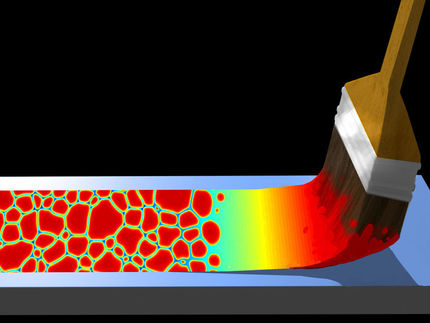Nature has more than one way to grow a crystal
New insight on how crystals form may advance materials, health, basic science research
Scientists have long worked to understand how Crystals grow into complex shapes. Crystals are important in materials from skeletons and shells to soils and semiconductor materials, but much is unknown about how they form.
Now, an international group of researchers has shown how nature uses a variety of pathways to grow crystals that go beyond the classical, one-atom-at-a-time route.
"Researchers across all disciplines have made observations of skeletons and laboratory grown crystals that cannot be explained by traditional theories," said Patricia Dove, a University Distinguished Professor at Virginia Tech. "We show how these crystals can be built up into complex structures by attaching particles - as nanocrystals, clusters, or droplets - that become organized into complex shapes. Many scientists have contributed to identifying these particles and pathways to becoming a crystal - our challenge was to put together a framework to understand them."
In animal and laboratory systems alike, the process begins by forming the particles. They can be small molecules, clusters, droplets, or nanocrystals. All of these particles are unstable and begin to combine with each other and with nearby crystals and other surfaces.
For example, nanocrystals prefer to become oriented along the same direction as the larger crystal before attaching, much like adding Legos. In contrast, amorphous conglomerates can simply aggregate. These atoms later become organized by "doing the wave" through the mass to rearrange into a single crystal, researchers said.
"Particle pathways are tricky because they can form what appear to be crystals with the traditional faceted surfaces or they can have completely unexpected shapes and chemical compositions," said Dove
By understanding how animals form crystals into the working structures known as shells, teeth, and bones, scientists will have a bigger toolbox for interpreting the crystals formed in nature.
The insights may also help in the design of novel materials and explain unusual mineral patterns in rocks.
Likewise, knowing how pollutants are transported or trapped in the minerals of sediments has implications for environmental management of water and soil.
Most read news
Topics
Organizations
Other news from the department science

Get the chemical industry in your inbox
From now on, don't miss a thing: Our newsletter for the chemical industry, analytics, lab technology and process engineering brings you up to date every Tuesday and Thursday. The latest industry news, product highlights and innovations - compact and easy to understand in your inbox. Researched by us so you don't have to.






























































